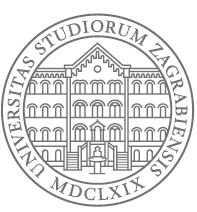| Abstract | Usporedno s procesima restrukturiranja elektroprivrednih poduzeća i liberalizacijom elektroenergetskog sektora kao i uspostavljanjem tržišta električne energije, uvodi se regulacija elektroenergetskih djelatnosti. Uvođenje regulacije prije svega podrazumijeva institucionalnu reformu, tj. uspostavljanje nezavisnog regulatornog tijela nadležnog za nadzor nad aktivnostima na tržištu električne energije kao i za regulaciju monopolnih djelatnosti kao što su prijenos i distribucija električne energije. Uloga regulatornih tijela u državama članicama EU kao i u državama kandidatkinjama naglašena je u Direktivi 2003/54/EZ u odnosu na prethodnu Direktivu 96/92/EZ koja je potaknula procese vezane uz uspostavljenje otvorenog tržišta električne energije kao jedinstvenog tržišta električne energije u EU. Bitan čimbenik za uspostavljenje otvorenog tržišta električne energije je omogućavanje reguliranog pristupa trećim stranama prijenosnoj i distribucijskoj mreži kao i mogućnost slobodne prekogranične trgovine električnom energijom pod prethodno utvrđenim uvjetima. Uvjete pristupa mrežama utvrđuju ili na njih daju suglasnost prije njihovog stupanja na snagu regulatorna tijela. Pod pojmom reguliranog pristupa mrežama podrazumijevaju se i tarife za korištenje prijenosne i distribucijske mreže. Usporedo s razvojem regulatornih tijela razvijaju se i metode ekonomske regulacije na temelju čijih načela se utvrđuju tarife za korištenje mreža. Metode ekonomske regulacije moguće je u grubo podijeliti na: tradicionalnu metodu regulacije stopom povrata i metode poticajne regulacije. Metoda stopom povrata prva se javila u regulaciji elektroenergetskih djelatnosti. Iako su se u prvim godinama primjene pokazala vrlo prihvatljivom kako regulatornim tijelima tako i reguliranim subjektima, s vremenom su uočeni određeni nedostaci koji se nastoje izbjeći primjenom pojedinih metoda poticajne regulacije. RH je usvajanjem paketa energetskih zakona iz 2001. godine pokrenula reformu elektroenergetskog sektora sukladno Direktivi 96/92/EZ. Reforma elektroenergetskog sektora u RH kao složen proces odnosi se na procese restrukturiranja Hrvatske elektroprivrede d.d. i razdvajanje pojedinih njenih djelatnosti, uspostavljenje tržišnih odnosa u elektroenergetskom sektoru, uspostavljenje regulatornog tijela itd. Daljnji koraci u reformi u RH uslijedili su u prosincu 2004. godine donošenjem revidiranog paketa energetskih zakona sukladno promjenama koje je donijela Direktiva 2003/54/EZ i Uredba 1228/2003. RH je na početku uspostavljanja regulatornog tijela, Hrvatske energetske regulatorne agencije (HERA), kao pravnog slijednika prethodnog regulatornog tijela Vijeća za regulaciju energetskih djelatnosti (VRED), odnosno na početku uvođenja modela ekonomske regulacije u reguliranim mrežnim djelatnostima. U ovom radu analiziraju se metode regulacije koje primjenjuju regulatorna tijela u EU, njihovi elementi, prednosti i nedostaci kao i pojedini segmenti reforme elektroenergetskog sektora: restrukturiranje elektroprivrednih poduzeća, dizajn modela tržišta, organizacija tržišnih odnosa i institucionalna reforma. Analiza se provodi kroz teoretski aspekt, iskustva država članica EU kao i kroz dosadašnja iskustva i praksu po pitanju provedbe pojedinih koraka reforme u elektroenergetskom sektoru u RH. Zaključno, analizira se mogućnost uvođenja poticajne regulacije u prijenosu električne energije u RH imajući pri tome u vidu dosadašnja iskustva u uvođenju ekonomske regulacije te razinu ispunjenja nužnih preduvjeta za njeno uvođenje koji su posljedica reforme elektroenergetskog sektora RH. |
| Abstract (english) | Parallel with processes of restructuring incumbent electricity utilities, liberalization of electro-energy sector and establishment of electricity market, regulation of electro-energy activities has been introduced. Introduction of regulation, first of all, implies institutional reform and establishment of independent regulatory authority competent for surveillance of market activities and regulation of monopoly activities, transmission and distribution of electricity, respectively. The role of regulatory authorities in the EU and candidate countries is more emphasized in Directive 2003/54/EC than in Directive 96/92/EC, which provided impetus for processes in regard to establishment of an open electricity market as a single EU electricity market. An important factor for establishment of open electricity market is regulated third party access to transmission and distribution network and possibility of free cross-border trade under the approved rules. Conditions for networks’ access are set or approved before their coming into force by regulatory authorities. A notion regulated access implies also tariffs for use of transmission and distribution network. Concurrently to development of regulatory authorities, methods of economic regulation, upon whose principles tariffs for use of networks are set, have been developed. Methods of economic regulation could be divided into: traditional rate of return regulation and incentive based regulation. Firstly, a rate of return method was applied in regulation of energy activities. Although at the beginning of its application, it appeared to be well accepted by regulatory authorities and regulated undertakings, as time passed many disadvantages were identified. These disadvantages were tried to be overcome by introduction of different incentive based methods of regulation. Republic of Croatia started a reform of electro-energy sector in year 2001 with adoption of the first package of energy laws which were in accordance with Directive 96/92/EC. Reform of electro-energy sector as a complex process encompasses restructuring of Hrvatska elektoprivreda (incumbent utility) and unbundling of its activities, establishment of market principles in electro-energy sector, introduction of regulatory authorities etc. Further steps in reform in Republic of Croatia were initiated in December 2004 with adoption of new, revised package of energy laws in line with provisions of Directive 2003/54/EC and Regulation 1228/2003. Republic of Croatia is at the initial phase of establishment of a new regulatory authority, Croatian Energy Regulatory Agency (CERA), as a legal successor of a previous regulatory authority Croatian Energy Regulatory Council (CERC), and therefore at the initial phase of introduction of model of economic regulation in regulated network activities. In this work different methods of economic regulation which are used by the EU regulatory authorities are analysed, as well as their elements, advantages and disadvantages. In addition, different segments of the electro-energy sector reform are analysed: restructuring of incumbent utilities, market model design, organisation of market relations and institutional reform. Analysis is carried through theoretical aspect, experiences of different EU countries and experience up to date and practice in enforcing different steps of the reform of electro-energy sector in Croatia. Finally, possibility of implementation of model of incentive based regulation in transmission of electricity in Croatia is studied, taking in consideration experience up to date in implementation of economic regulation and a level of fulfillment of necessary requirements/precondition for its implementation as a consequence of the electro-energy sector reform. |


